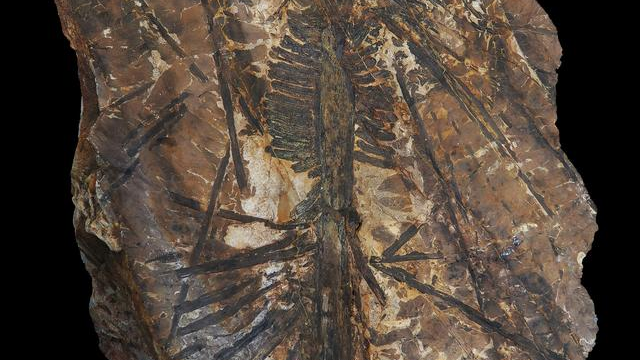Scientists discover 300-million-year-old tree fossils in north China

A photo of Paratingia wuhaia fossil from Nanjing Institute of Geology and Palaeontology, Chinese Academy of Sciences. /Xinhua
An international research team led by Chinese scientists has discovered tree fossils dating back 300 million years in a coalfield in north China's Inner Mongolia Autonomous Region, announced the Nanjing Institute of Geology and Palaeontology under the Chinese Academy of Sciences on Monday.
The species, Paratingia wuhaia, with fruit clusters similar to pine cones and leaves similar to fir leaves, was one of the main plants that formed coal. The area in which the fossils were found was a marshy forest about 300 million years ago, said Wang Jun with the institute, also the leader of the research.
A sudden and massive volcanic eruption fossilized a large number of ancient plants in the area, including the Paratingia wuhaia trees, he added.
The species is a transitional plant between spore plants and gymnosperms. It survived for 110 million years after the emergence of advanced seed plants. The species, together with other plants in swamp forests, formed the coal.
The study was published in the journal of Proceedings of the National Academy of Sciences of the United States of America (PNAS).
Photos
Related Stories
- Scientists find new plant species from 15-mln-year-old fossils
- Ancient village with houses built with 375 million-year-old fossils
- Fossils from 210 million years ago found in Guangzhou
- Giant animal fossils found at building site in Lanzhou
- N China invests in early human project
- Experts urge more protection for fossils in China
- Chinese paleontologists discover bizarre dinosaur fossils
- Chinese fossils bear evidence of Jurassic-era fleas
- Tyrannosaurus exhibition opens in east China
- Prehistoric sites discovered in Guizhou's Qinglong
Copyright © 2021 People's Daily Online. All Rights Reserved.










